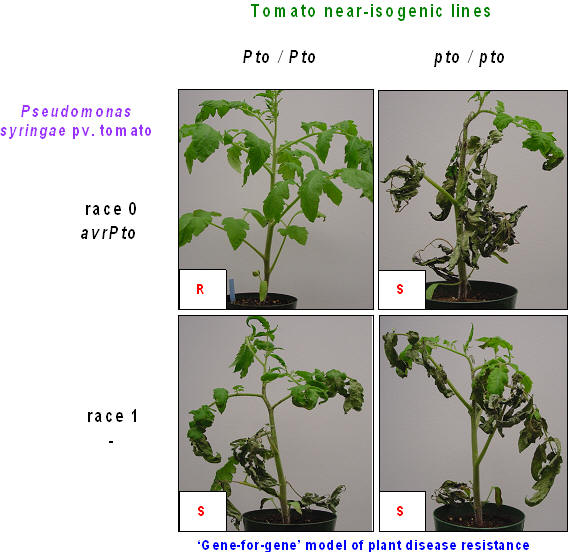View count:
2472
Research
We are interested in ...1. Identification of gene(s) involved in regulation of the avirulence protein AvrPtoB in
Pseudomonas syringae pv. tomato strain T1, the causing agent of tomato speck disease
2. Characterization of the type VI secretion systems in Pseudomonas syringae pv. tomato strain DC3000
3. Isolation of plant growth-promoting rhizobacteria (PGPR)
4. Elucidation of the mechanisms underlying induced systemic resistance (ISR) triggered by Streptomyces coelicolor
Identification of gene(s) involved in regulation of the avirulence protein AvrPtoB in
Pseudomonas syringae pv. tomato strain T1, the causing agent of tomato speck disease

We try to address one significant question related to the type III effector protein AvrPtoB: “ Why do race 1 strains of Pseudomonas syringae pv. tomato (Pst) contain avrPtoB-like sequence but are unable to trigger Pto-mediated resistance?” AvrPtoB is a bacterial effector protein secreted into plant host cells by Pst type III secretion system. Upon recognition by Pto resistance protein, plant can activate its defense mechanism and restrict bacterial growth and inhibit disease development. In a recently report, ectopic expression of AvrPtoB from Pst T1, a virulent race 1 strain, in an avrPto/avrPtoB deletion mutant of Pst DC3000, triggers Pto-mediated resistance. However, although it contains avrPtoB sequences, Pst T1 itself causes tomato speck disease when Pto is present in tomato. Surprisingly, we observed that transcript of avrPtoB can be detected in Pst T1, but no AvrPtoB protein accumulates in this strain. In an evolutionary point of view, plants try to develop new strategies to defend themselves from pathogens attack while pathogens try to overcome these defense mechanisms. These data suggest that Pst T1 may develop a regulatory mechanism to degrade AvrPtoB and avoid itself being recognized by host plants. After the gene involved in this regulatory mechanism is identified, we will further characterize and determine its function related to protein stability of AvrPtoB and pathogenicity of Pst T1. In addition, we will also investigate if this regulation of AvrPtoB protein is a common mechanism in Pst race 1 strains.
Characterization of the type VI secretion systems in Pseudomonas syringae pv. tomato strain DC3000

Type VI secretion system (T6SS) is a newly defined system based on the studies in Vibrio cholerae and Pseudomonas aeruginosa in 2006. Unlike type III secretion systems, T6SS is present in many Gram-negative bacteria and is involved in virulence, interbacterial competition, root-nodule formation, resistance against abiotic stress, biofilm formation and elicitation of immune responses in animals. In Pst DC3000, two gene clusters encoding T6SS-related genes are identified, but their roles remain uncovered. Therefore, our goal is to understand whether they both are functional as a secretion systems and what their functions are in PstDC3000. Currently, we have clarified that HSI-II is responsible for Hcp-2 secretion, but HSI-I is not. The functions of T6SS and regulatory mechanism of expression of T6SS genes in PstDC3000 are now under investigation.
Isolation of plant growth-promoting rhizobacteria
Plant growth-promoting rhizobacteria (PGPR) can promote plant performance by direct or indirect mechanisms. The purpose of this project is to screen for rhizobacteria with plant growth-promoting ability and even more, capacity to induce resistance to protect plant from pathogen attack. The rhizobacterial strains isolated from rhizosphere soils and root systems collected from various environmentally distinct areas be analyzed for their ability to promote plant growth or induce plant resistance against selected pathogens. we hope to identify novel PGPRs which have more potentials and advantages to be applied in the field.
Elucidation of the mechanisms underlying induced systemic resistance (ISR) triggered by Streptomyces coelicolor

In collaboration with Dr. Carton Chen in Yang-Ming University, we discovered the plant growth promoting and ISR elicitation ability of Streptomyces coelicolor. We are now characterizing the mechanisms underlying these two scenarios.

